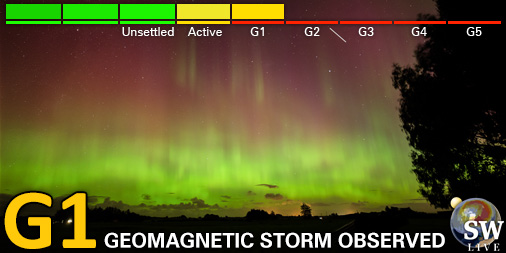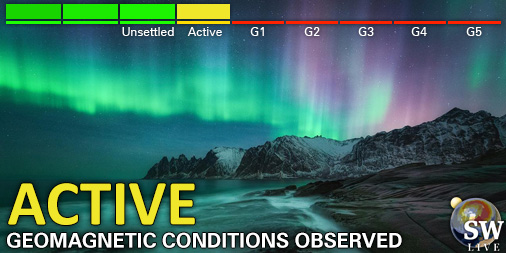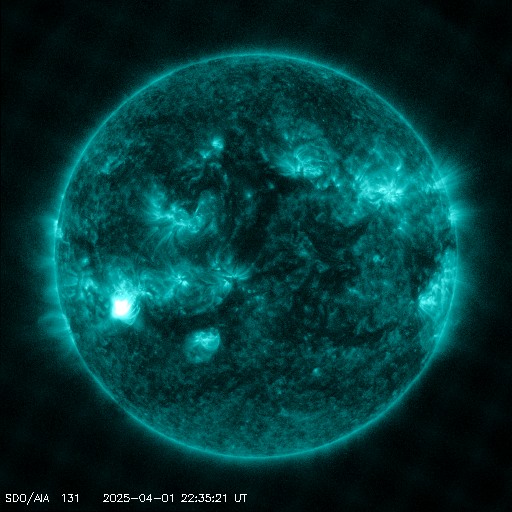Viewing archive of Saturday, 17 May 2003
Solar activity report
Prepared by the NOAA © SWPC and processed by SpaceWeatherLive.com
Joint USAF/NOAA Report of Solar and Geophysical Activity
SDF Number 137 Issued at 2200Z on 17 May 2003IA. Analysis of Solar Active Regions and Activity from 16-2100Z to 17-2100Z
IB. Solar Activity Forecast
IIA. Geophysical Activity Summary 16-2100Z to 17-2100Z
IIB. Geophysical Activity Forecast
III. Event Probabilities 18 May to 20 May
| Class M | 05% | 05% | 10% |
| Class X | 01% | 01% | 01% |
| Proton | 01% | 01% | 01% |
| PCAF | green | ||
IV. Penticton 10.7 cm Flux
Observed 17 May 102 Predicted 18 May-20 May 110/120/125 90 Day Mean 17 May 124
V. Geomagnetic A Indices
Observed Afr/Ap 16 May 009/009 Estimated Afr/Ap 17 May 010/012 Predicted Afr/Ap 18 May-20 May 010/012-015/020-010/015
VI. Geomagnetic Activity Probabilities 18 May to 20 May
| A. Middle Latitudes | |||
|---|---|---|---|
| Active | 20% | 20% | 30% |
| Minor storm | 10% | 15% | 10% |
| Major-severe storm | 01% | 05% | 01% |
| B. High Latitudes | |||
|---|---|---|---|
| Active | 35% | 35% | 35% |
| Minor storm | 15% | 20% | 15% |
| Major-severe storm | 05% | 05% | 05% |
All times in UTC
Current data suggests there is a moderate possibility for aurora to appear at the following high latitude regions in the near future
Oulu, Rovaniemi, Sodankylä, UtsjokiKirkenes
Murmansk, Vorkuta
Kiruna, Luleå
Current data suggests there is a slight possibility for aurora to appear at the following high latitude regions in the near future
KuopioTrondheim
Arkhangelsk
Sundsvall, Umeå
Current data suggests there is a slight possibility for aurora to appear at the following middle latitude regions in the near future
TamperePetrozavodsk, Syktyvkar
Latest news
Latest forum messages
Support SpaceWeatherLive.com!
A lot of people come to SpaceWeatherLive to follow the Sun's activity or if there is aurora to be seen, but with more traffic comes higher server costs. Consider a donation if you enjoy SpaceWeatherLive so we can keep the website online!

Latest alerts
20:15 UTC - Geomagnetic activity
Minor G1 geomagnetic storm (Kp5) Threshold Reached: 20:02 UTC
13:03 UTC - Hemispheric Power Index
The OVATION model predicts the Hemispheric Power Index to reach 50GW at 13:56 UTC
Wednesday, 2 April 2025
04:03 UTC - Hemispheric Power Index
The OVATION model predicts the Hemispheric Power Index to reach 50GW at 04:56 UTC
01:45 UTC - Geomagnetic activity
Active geomagnetic conditions (Kp4) Threshold Reached: 01:32 UTC
Tuesday, 1 April 2025
22:51 UTC - Solar flare
Moderate M2.5 flare
Space weather facts
| Last X-flare | 2025/03/28 | X1.1 |
| Last M-flare | 2025/04/01 | M2.5 |
| Last geomagnetic storm | 2025/03/27 | Kp5 (G1) |
| Spotless days | |
|---|---|
| Last spotless day | 2022/06/08 |
| Monthly mean Sunspot Number | |
|---|---|
| February 2025 | 154.6 +17.6 |
| April 2025 | 152.5 -2.1 |
| Last 30 days | 130.7 -17.9 |





